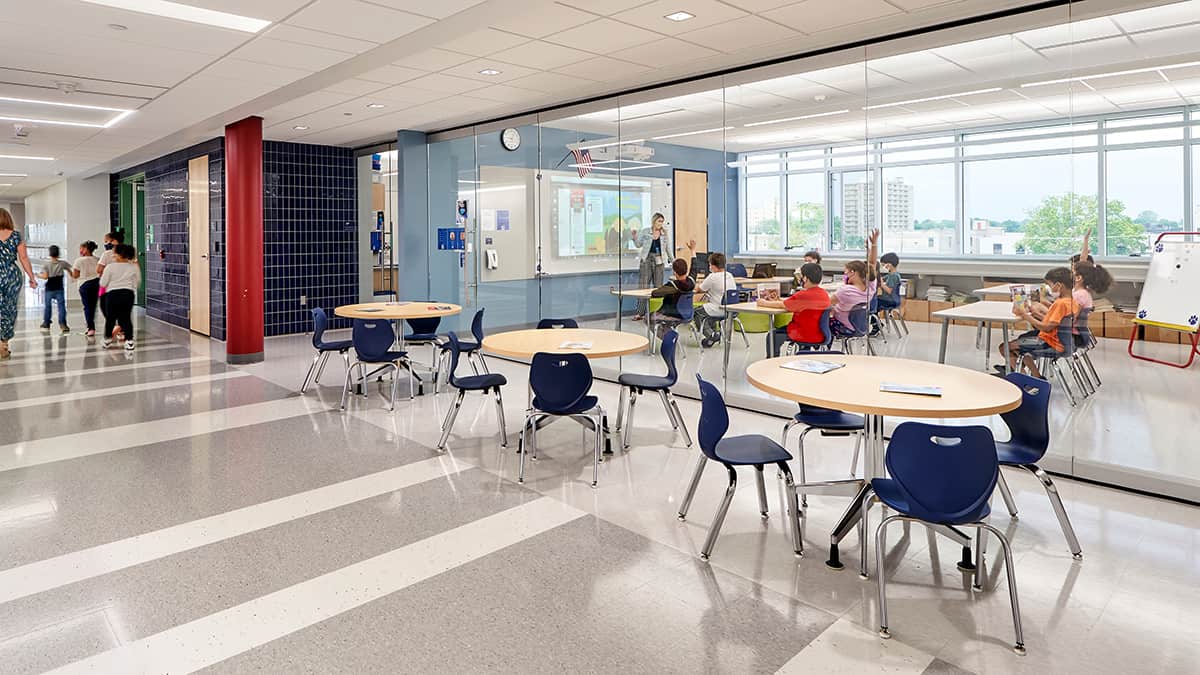Find Inspiration in the Classroom Next Door with a Culture Walk

Is your classroom living up to its full potential? How can you refresh the space to maximize teaching and learning for everyone?
Inspiration might be right around the corner...literally! By embarking on a “culture walk,” teachers can get a sense of how their peers foster different environments for students and glean information to influence how they can complement and enhance their own classrooms.
What Is a Culture Walk?
A culture walk is a quick and engaging way to inspire teachers and/or students to reflect on the positive aspects of their classrooms as well as what changes might be needed. Teachers can conduct a culture walk solely in their own classroom, or they can organize a tour of classrooms along an entire hallway, department, grade level or school.
To guide a culture walk, consider the following questions regarding the overall first impression, specific education support and classroom layout or design.
- First Impression:
-
- What do I feel when I walk into this space?
- What do I smell when I walk into the room?
- What do I notice most about this space?
- Do I feel comfortable and safe in this space?
- If I had to describe this space in one word, what would it be?
- Education Support:
-
- Does this space make me feel like student learning is important?
- Does this space make me feel like student autonomy and voice are important?
- Does this space make me feel like character and positive culture are important?
- Classroom Design:
-
- Does the space provide a nice flow and movement?
- What does the furniture and room arrangement feel like?
- Does this space support the style of teaching the teacher prefers most?
- Is there somewhere for me to work with a group and independently?
Why Should I Host a Culture Walk?
The culture and character of a classroom can make or break a student’s or teacher’s educational experience. But there are plenty of other reasons why schools might consider a culture walk:
- Find inspiration. Culture walks allow teachers to see how their peers utilize physical space to enhance their learning culture. For instance, a peer’s floorplan that offers seating areas for small groups might suggest a culture of collaboration. On the other hand, various individual work areas peppered throughout a classroom may signal the value of student autonomy.
- Develop a “wish list” for administration. Culture walks can be a great opportunity for teachers to compile a “wish list” of items—from lounge chairs for a reading nook to plants that create a welcoming ambience—for administration to consider ahead of their next procurement cycle.
- Get student input. Students may have very creative ideas about their space. By guiding students along a culture walk, teachers can engage a fresh perspective and recruit some help to think outside the box.
- Do some spring cleaning. When teachers spend every day of the school year in the same room, it may be difficult for them to evaluate their space naturally. Culture walks give teachers a designated opportunity to remove them from their familiar atmosphere and reflect on what aspects of their classroom need a refresh or what they could do without altogether.
How Do I Host a Culture Walk?
To carry out your very own school culture walk, follow these four tips:
- Find a good time for you. Teachers can conduct culture walks at any point. Some find them useful before the start of a new school year, on a specific inservice day, or before or after a holiday break.
- Consider student involvement. Students don’t have to be in the room for teachers to gain helpful insights from a culture walk, and it may be less disruptive to teaching. At the same time, having students in the classroom can help demonstrate how they interact with a given environment.
- Keep it general, not personal. Establish upfront that the culture walk is for reflection and feedback on how to better support students in one’s own classroom. It’s not about judgment or competing with other teachers.
- Plan how to share feedback. Culture walks are usually conducted in silence to minimize disruption. Afterwards, teachers can share their feedback and observations independently or in groups. They might involve administrators in that conversation or share recommendations after the fact.
Make the most effective use of your culture walk with the right timing, involvement and planning. You'll also discover what works well for your team to enhance future culture walks and maximize your takeaways from the experience.
Experience Empowered Education
When I was a principal, we engaged culture walks as a way to start fresh at the beginning of the school year. Teachers reflected on their space and created wish lists to share with me. It was a great opportunity to brainstorm how our spaces could better embody our school motto: “Best is the standard.” (Go Cardinals!)
From these experiences, I know firsthand how culture walks can empower teachers, students and administrators to discover the full potential of their learning environments. Give it a try and let the inspiration strike!
If you have any questions about how to structure a culture walk at your school, I would love to speak with you. Reach out to me at emily.mcginnis@ki.com.
Subscribe
Stay up to date with the latest trends and more.






